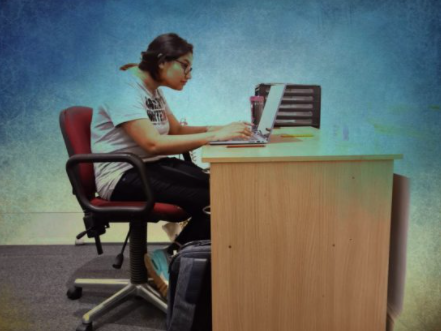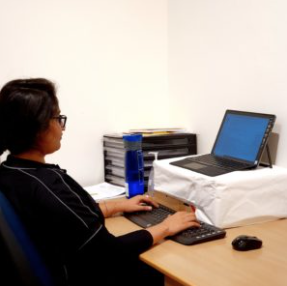Sit Well Stay Well
The global pandemic has made us stay put at home. Staying at home however doesn’t mean that work stops.
Many people spend hours a day in front of a computer, without thinking about the impact it can have on their bodies. You could be causing physical stress to your body daily without realising it. This could be by extending the wrists, slouching, sitting without foot support or straining the neck to look at poorly placed monitors.
Ergonomics are extremely important irrespective of whether you work at a desk, on your feet, behind a wheel or in the field. Getting your ergonomics right can be difference between maintaining your health, or causing an injury. Below we have made a check list of what to look at when setting up your home office space. Going through this item by item is a great start on your way to better ergonomics.
Chair height – Stand next to your chair and observe where the seat reaches up to. For good ergonomics, the chair should be reach up to the fold of the back of your knees. Your knees should be bent at, or slightly less than 90 degrees.
Hips – Your hips should be slightly higher than your knees. If your knees are higher than your hips, consider elevating your chair, or try putting a small pillow under your buttocks.
Armrests – If they are to be used they should be short or able to be adjusted and be able to fit under the desk. If they are too high, and cannot fit under the desk, you will not be able to pull in your chair close enough.
Seat back – Adjust so you can sit with your back upright and a natural ‘S curve’ through your spine.
Sitting – Sit “tall,” aligning your ears, shoulders and hips in a vertical line, this will help maintain your natural ‘S’ curve. A good cue is to lift the chest and think about making yourself an inch taller.
Keyboard and Mouse – Should be positioned directly in front of you with your wrist and forearms supported on the desk. You should not need to twist to reach them. Ensure your wrists are not bent back too far, a support can be added under the wrists if needed.If using a laptop, consider raising the laptop to get the screen to an appropriate height, and using a separate USB, or Bluetooth keyboard and mouse.
Shoulders – when your hands are resting on the keyboard or mouse your shoulders should, be relaxed, not raised, with your elbows resting comfortably and in line with your shoulders.
Laptops – Whilst convenient, they can detrimental if used for a prolonged period. Looking down at a monitor instead of looking straight on rounds our spine, extends our neck and often results in a stooping in posture. The screen should be adjusted so that the top of the laptop screen is level with your eyes. This can be done by using books or boxes under your laptop.
Monitor – should be an arms length away (approx.50-60 cms)
Glasses/Vision – Adjust your screen settings or zoom in and out so you are not straining to see. If wearing glasses, ensure they fit properly to avoid tilting your head, especially with bifocals.
Typing – Aim to type with light strokes, to help keep the forearms and wrists relaxed.
Document Holder – Ideally sits directly below your screen to ensure you are not having to turn your head from side to side. For those of you who are touch typist, raise your document holder to be a little higher as you will spend more of your time looking at it rather than the keyboard/screen
Leg room – If your feet constantly hit the wall when you stretch them, you should consider moving the desk away to a different location or change its position to allow you to stretch your legs out periodically.
Move – Movement has many benefits: it relaxes tissues, lubricates joints and prevents stiffness, improves circulation, reduces fatigue, and builds stamina.
Breaks – At least every 30 minutes, take a short (2 min) break. Take your hands off the keyboard get out of your seat and move or walk around. Any position or posture, no matter how good can be detrimental if held for too long without a break.

”The goal of your home, or any office, is to be set up for a comfortable,
relaxed posture.

Good Posture – Hips higher than Knees





